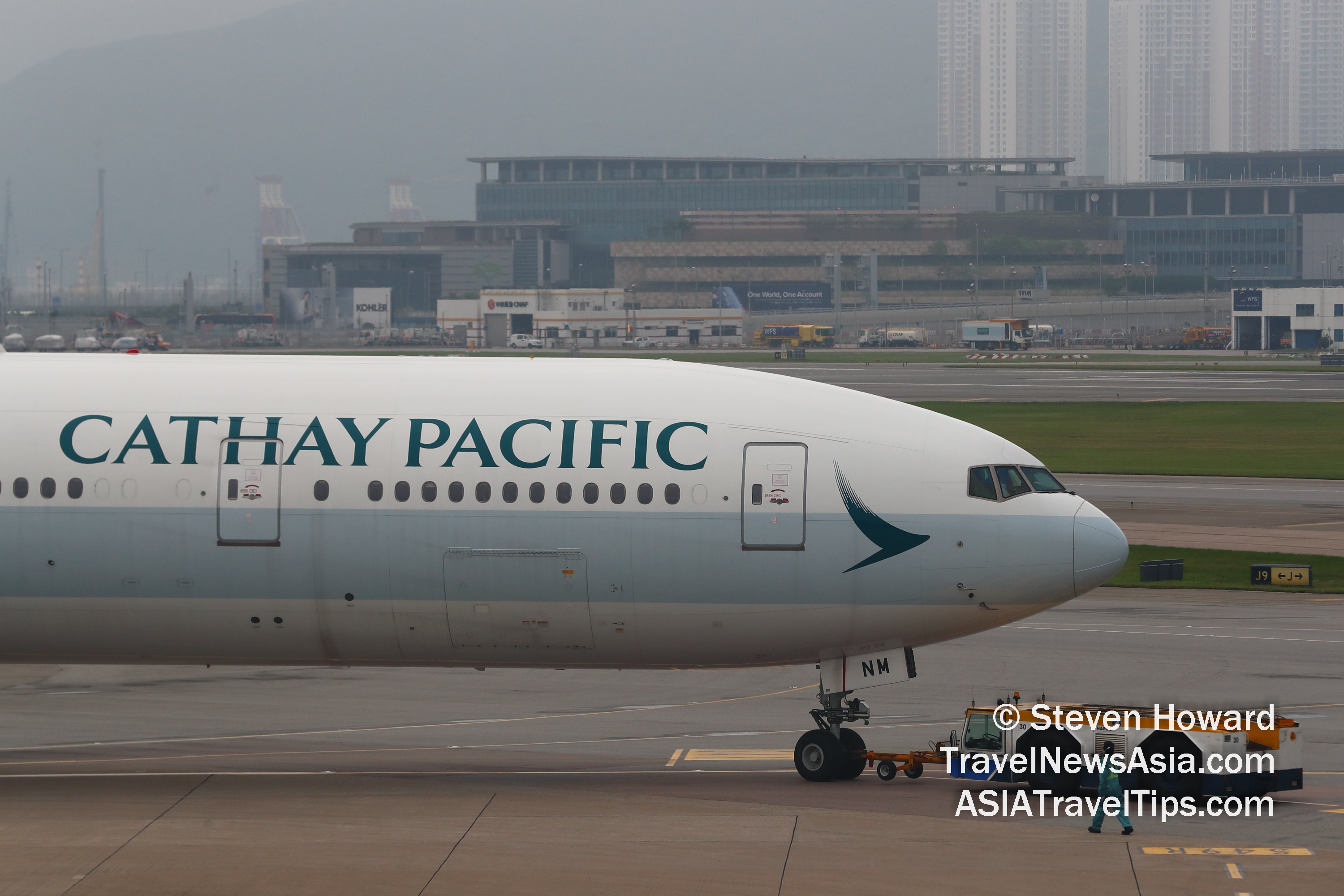|
Cathay Pacific and Cathay Dragon carried a total
of 2,426,961 passengers last month � a drop of 7.1% compared to
September 2018.
Passenger load factor decreased by 7.2
percentage points to 73.6%, while capacity, measured in available
seat kilometres (ASKs), rose by 9.8%. In the first nine months of 2019, the
number of passengers carried grew by 1.3% and capacity increased
by 6.9%, as compared to the same period for 2018.
The two airlines carried 172,637 tonnes of cargo
and mail in September 2019, a drop of 4.4% compared to the same month
last year. The cargo and mail load factor fell by 3.7 percentage
points to 65.5%. Capacity, measured in available freight tonne
kilometres (AFTKs) was up by 0.1% while cargo and mail
revenue freight tonne kilometres (RFTKs) dropped by 5.3%. In the
first nine months of 2019, the tonnage fell by 6.8% against a 0.7%
increase in capacity and a 7.0% decrease in RFTKs, as compared to
the same period for 2018.

Cathay Pacific Group Chief Customer and
Commercial Officer, Ronald Lam, said, �September was another
challenging month for our passenger business, with revenue
adversely affected by weakened market sentiment, particularly for
travel into Hong Kong. Passenger load factor was down 7.2
percentage points and inbound passenger traffic dropped by 38% �
both unchanged from August. Outbound traffic was down 9%
year-on-year, a slight improvement over the 12% drop seen last
month. Transit traffic via Hong Kong remained relatively stable.
�The mainland China market has been hit
especially hard and we observed very weak demand for travel over
the National Day holiday � traditionally a very strong period. Our
India routes were the main bright spot, buoyed by strong demand
between India and North America. Intense competition together with
an increasing reliance on transit passengers over the short term
has continued to apply additional pressure on yield.
�We continue to see a significant shortfall in
inbound bookings for the remainder of 2019 as compared to the same
snapshot last year. This has been felt most strongly with bookings
from mainland China and our other Asian markets. As previously
announced, we are taking a number of short-term tactical measures
to respond to this shortfall, most notably realigning capacity for
the winter season (from end October 2019 to end March 2020).
�As anticipated, our cargo business showed signs
of improvement compared to August as we stepped into air freight�s
traditional high-demand season. Most markets saw a better
month-on-month performance and we mounted a number of charter
operations on top of our scheduled services to meet added demand
for air freight coinciding with the release of new electronic
products. However, the overall market remains challenging and
competitive with tonnage carried and load factor for the year to
date still significantly below the same period last year.
�We continue to closely monitor market sentiment
and global travel trends in order to best align passenger and
cargo capacity with demand. Meanwhile, our investment in and
commitment to the customer experience is ongoing. For example, a
number of new soft products and dining services in First and
Business Class cabins are being unveiled right now, specifically
mattresses and slippers in Business, and improved pillows and
blankets in both Business and First. The inflight entertainment
offering across all our cabins has also been substantially
increased with nearly four-times the quantity of content on many
flights. This is all intended to give customers more reasons to
fly with us. Nevertheless, our expectation is that rest of 2019
will remain incredibly challenging for the airline and our
second-half financial results are expected to be below those of
our first-half.�
|
Headlines: |
|
See latest
Travel News,
Interviews,
Podcasts
and other
news regarding:
Cathay Pacific,
ASKs,
RFTKs,
Hong Kong.
|
